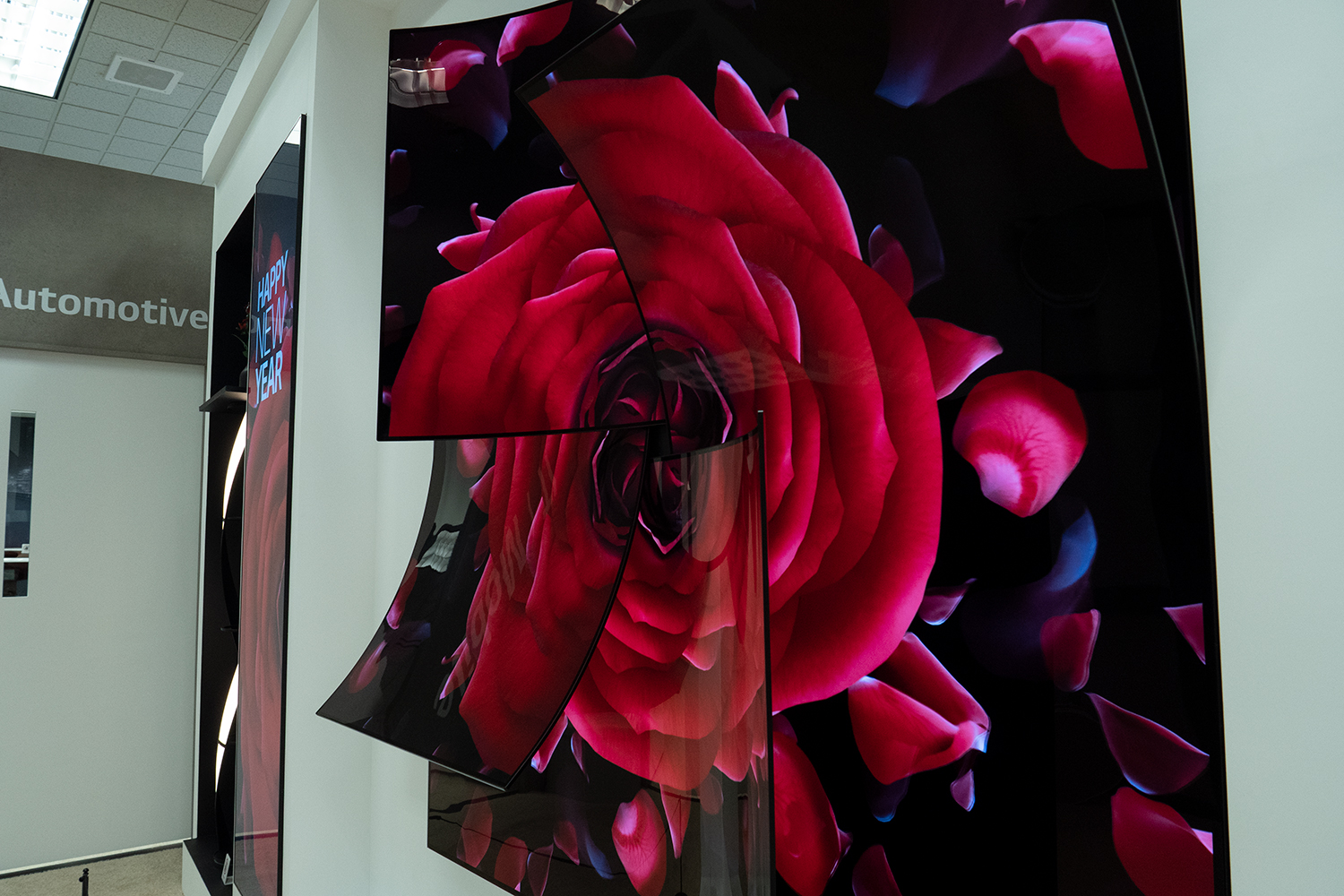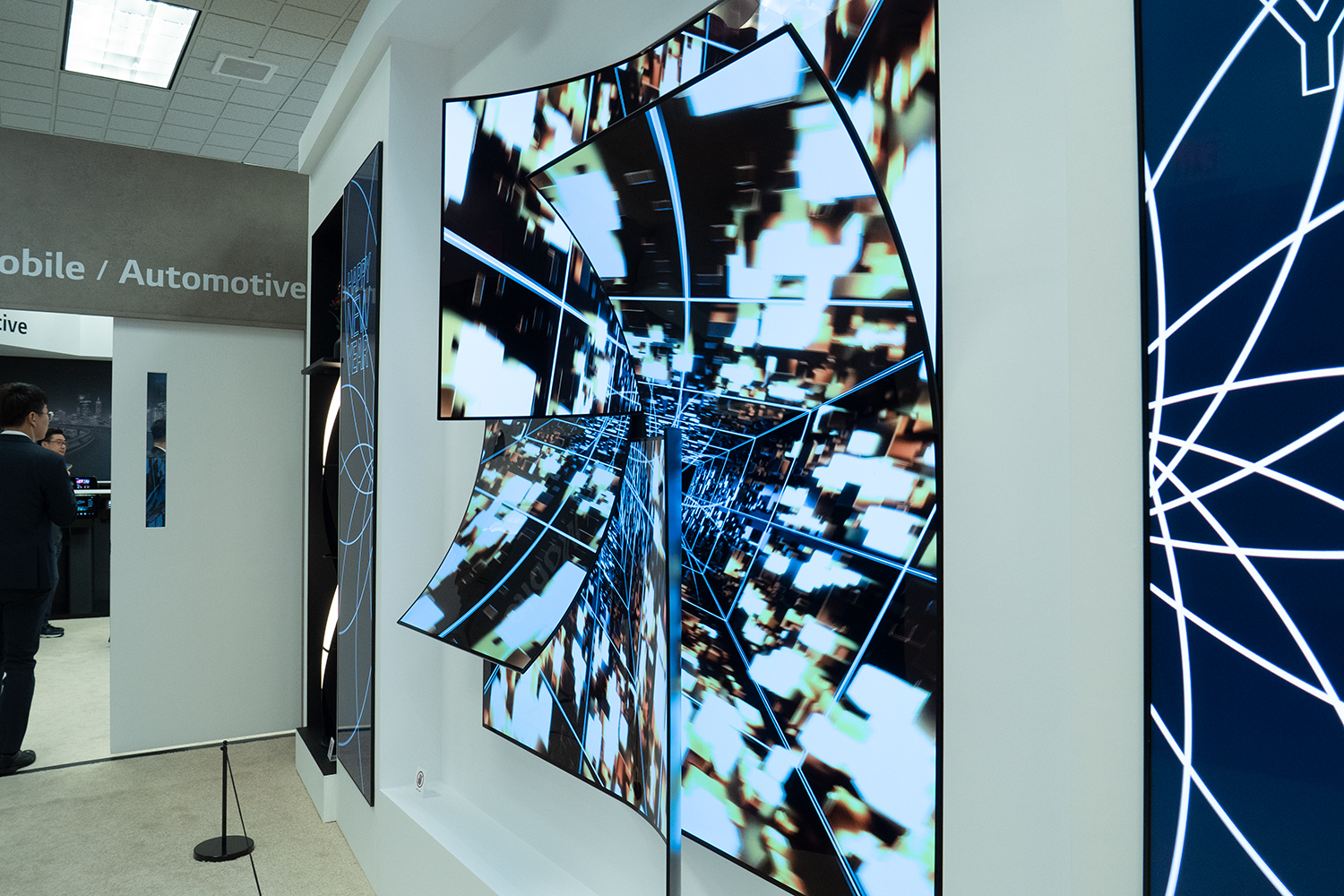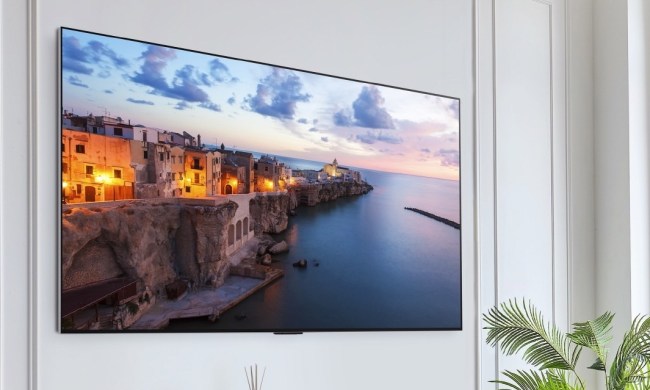If the spectacle of an 88-inch 8K OLED TV isn’t enough to get your geek juices flowing, how about an 88-inch 8K OLED where the screen itself is a speaker? It’s an LG Display innovation used in another brand’s TV, and the company’s latest take on screen-as-speaker tech is the most advanced version we’ve seen yet. We got to hear it here at CES 2019.
More CES 2019 coverage
- Vizio’s latest soundbars double down on Dolby Atmos — again
- LG’s acrobatic new Dolby Atmos soundbar flips on its front for mounting
Rival TV maker Sony has two generations of OLED TVs in which the screen itself is a speaker — what’s not commonly known is that the company purchased the tech from LG Display, just as it does the OLED panels for its TVs — but that fact doesn’t steal much thunder from LG’s latest announcement.
Now featuring no less than five transducers directly attached to the screen, LG Display is now offering Dolby Atmos sound without the need for any external speakers, amplifiers, or soundbars. The company calls the tech Crystal Sound.
The Dolby Atmos height effect comes by way of two transducers placed at the top of the display, flanking the left and right sides, along with some clever processing to virtualize the height effect Dolby Atmos is known for providing. Below those two transducers are three more, one on each side and one in the center. When all five go to work together, the effect is impressive.
In addition to offering much better sound quality than most built-in TV speakers are capable of, sound effects can be made to come from the area on the screen where the action is taking place. So, if one character is speaking on the right side of the TV, their voice seems to come from their mouth, while an explosion on the left side of the screen will come from the image of the explosion itself.
While LG isn’t offering this tech in any of the TVs it has announced at the show so far, it is likely it will be deployed in the coming year or two. Meanwhile, Sony has announced it has employed this very technology in its latest OLED TV, which can also function as the center channel in a more elaborate surround sound speaker system.
LG also showed Digital Trends a new innovation in OLED picture processing that drops the OLED panel’s refresh rate down to 3.5 ms. Previously, OLEDs fastest response time was 6 ms. The advantage this will bring to viewers is much clearer fast-moving content with minimal motion blur. Sports fans, in particular, will benefit from this feature.





